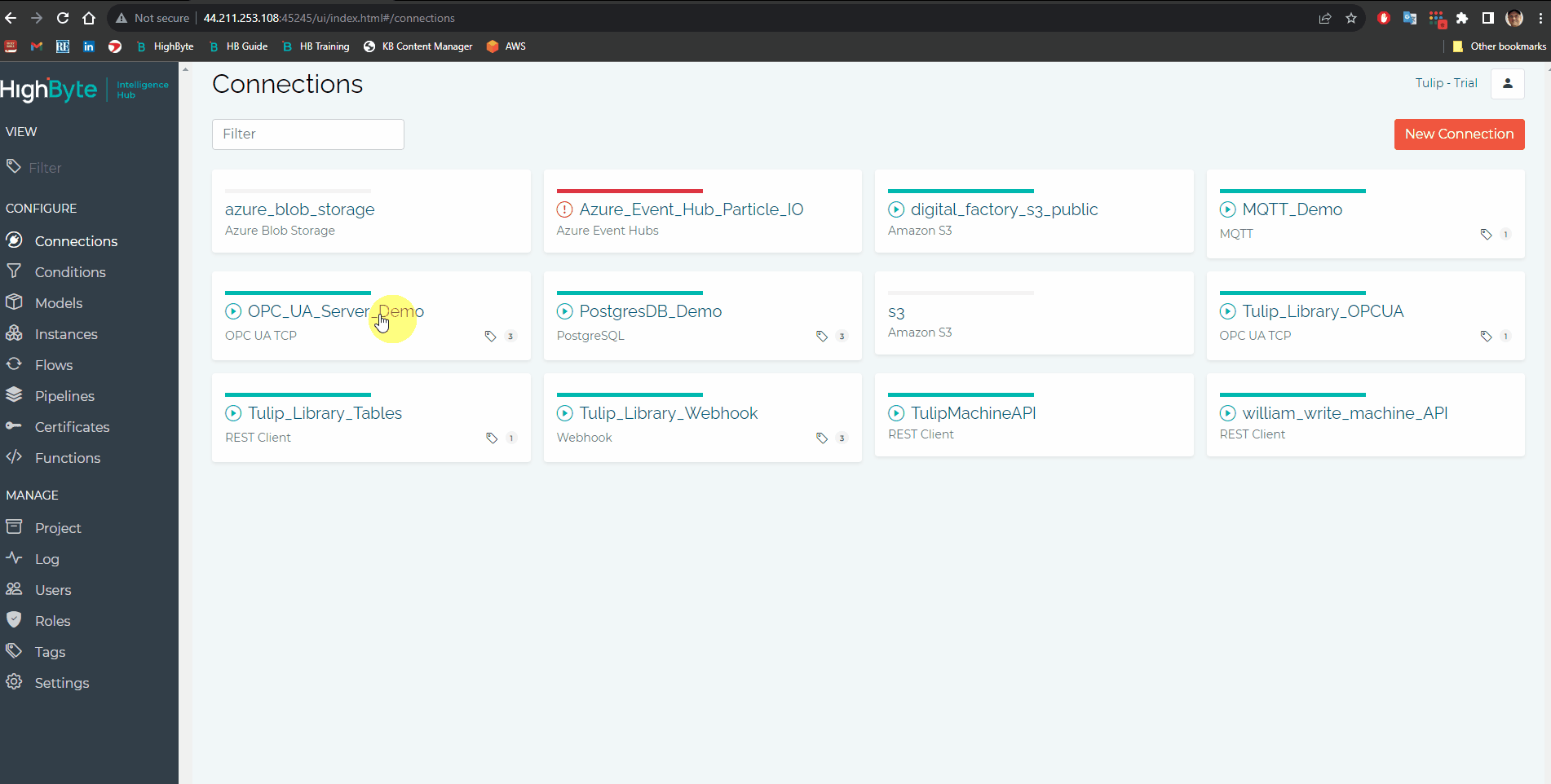How-To Data Sent from Tulip using a Webhook
What Does This Article Cover?
This article describes one option for exchanging data between HighByte Intelligence Hub and Tulip Frontline Operations Platform. This article assumes that the user has knowledge and experience configuring Intelligence Hub Connections and Flows and Tulip Apps and Connectors. The concept of an App is central to Tulip and therefore it is assumed that a Tulip App is being used to trigger the sending of data to Intelligence Hub.
There are multiple technical approaches for exchanging data between Intelligence Hub and Tulip. The optimal approach to use is determined by the application use case and the direction of the flow of data. This article covers using a Webhook to send information from Tulip to Intelligence Hub including the following process.
- Configuring a Tulip Connector
- Configuring a Tulip App to trigger data to be sent using a Tulip Connector
- Configuring an Intelligence Hub Webhook Connection
- Configuring an Intelligence Hub Instance
- Configuring an Intelligence Hub Flow
What is Tulip?
Tulip enables frontline operations to build solutions to digitize their processes. These solutions are referred to as Apps and these Apps are typically targeted solutions solving a specific and unique business problem. Tulip is cloud hosted software as a service.
Using a Webhook to send information from Tulip to Intelligence Hub:
A Webhook allows software to communicate by sending a package of data over HTTP. Tulip can send information to the Intelligence Hub using this method. This requires a Tulip App to trigger a Tulip Connector function that contains the information that Intelligence Hub will receive. Intelligence Hub receives the information through a Intelligence Hub Connection that is trigger by an Intelligence Hub Flow. In this scenario the Webhook triggers a Flow and is also input to the Flow. A Tulip App is used to trigger specific data to be sent using a Tulip Connector. The data is received into Intelligence Hub using a Connection when a Flow is triggered by the data being sent by the Webhook. The Intelligence Hub then subsequently transforms the data and sends it to one or more target systems.
The following process may be used to configure a Webhook to send information from Tulip to Intelligence Hub. The following instructions address the general process. Step-by-step instructions are beyond the scope of this article and intermediate knowledge of Intelligence Hub and Tulip is assumed.
Configuring a Tulip Connector:
A Tulip HTTP connector may be configured to POST and output from Tulip to a specific IP address or hostname and port.

Configuring a Tulip App to trigger data to be sent using a Tulip Connector:
A Tulip App trigger is used to send data via the Tulip Connector.

Configuring an Intelligence Hub Webhook Connection:
Intelligence Hub receives the data sent using a Connection configured for a specific port. A Connection Input must be configured. Configuring a filter for the Intelligence Hub Webhook Connection Input is a good practice.

Configuring an Intelligence Hub Instance:
An Intelligence Hub Instance is used to create a Model for the combining the formatted data received from Tulip with data from other sources.

Configuring an Intelligence Hub Flow:
An Intelligence Hub Flow is used to trigger the data being sent to be read. The Webhook message itself might be used to trigger the data to be read.

Other related material:
- Intelligence Hub Webhook Connection
- Tulip Connectors